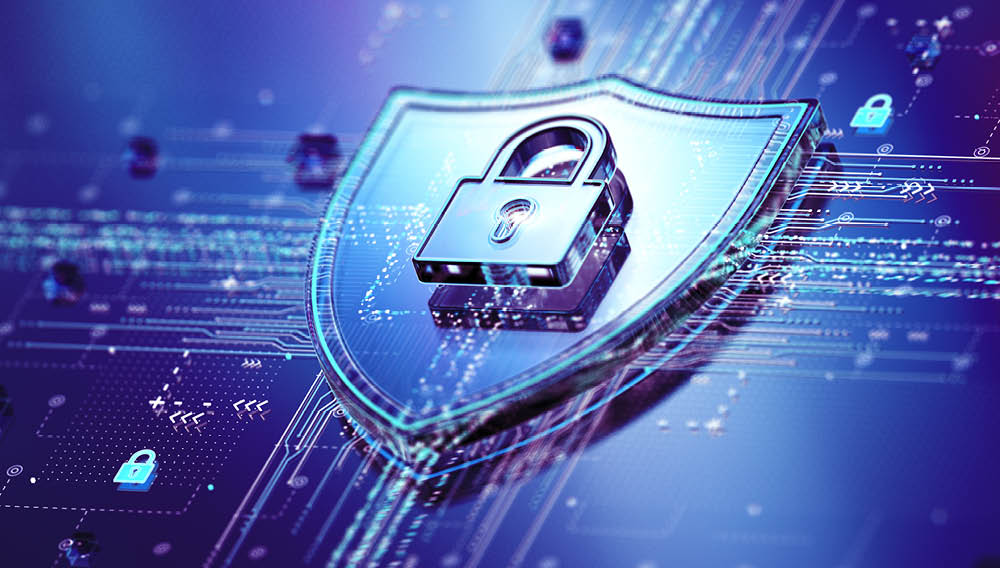Blockchain: The Next Step in Cybersecurity

Most people associate the term “blockchain” with bitcoin and other cryptocurrencies, or maybe with nonfungible tokens, also known as NFTs. But blockchain technology is used in a vast number of different applications, one of the most notable being in the field of cybersecurity. The fact that blockchain is trustless, works through decentralization, and is consensus-driven, makes it potentially useful in fighting cybercrime.
That said, blockchain is also a potential tool for cybercriminals.
It’s no wonder that the cybersecurity field, especially in relation to blockchain technology, is exploding.
What Is a Blockchain?
To understand the promise and the threat, it’s necessary to understand what a blockchain is. It’s basically a list of interactions or transactions shared between and across many users. Each interaction or transaction is a block on that list, or chain, of interactions—hence the name “blockchain.”
Imagine hundreds or thousands of people having that same list or ledger. That is the decentralized element. When someone makes a new transaction, everyone sees it, providing transparency. Everyone then must agree and record this entry on their list or digital ledger, making it resistant to fraud or manipulation. When thousands of people record and agree the transaction took place, that transaction and its details have a high degree of trust.
The decentralized list, or ledger, that is transparently shared by thousands for trust is the essence of the blockchain.
How Does Blockchain Technology Work with Cybersecurity?
The ability to resist manipulation and maintain trust is what makes blockchain technology so useful in cybersecurity. Here are six ways cybersecurity experts use blockchain today:
- Protecting data integrity. When data is recorded in a blockchain, any attempt to alter or delete it would be highly challenging and would leave a clear audit trail of that effort.
- Identity management. Creating a secure and decentralized identity makes identity theft and identity fraud much more challenging. Individuals are in control of their own identity management without having to go through a centralized, possibly untrustworthy authority or company.
- Securing transactions. Secure and automated transactions that don’t go through intermediaries are highly resistant to hacking or access that isn’t authorized.
- Network security. Distributed denial-of-service (DDoS) attacks are harder to mount when data is decentralized. Decentralization makes it harder for attackers to affect or control the entire network of the blockchain.
- Securing devices. The Internet of Things (IoT) opportunity has been slowed by the inherent security risk of these devices. Decentralization of device communication on the blockchain will reduce the risk of being hacked.
- Securing supply chains. You can imagine the lure that moving goods from manufacturer to consumer presents. Things can fall off the back of digital trucks with ease. Creating a record of each item and each step of custody in the supply chain keeps valuables safe from hackers and also ensures that counterfeit goods don’t enter it.
Blockchain-Related Threats
As with any technology, blockchain has attracted criminals who are intent on using it, abusing it, and breaking it. Other threats are inherent to blockchain technology and cybersecurity. Some examples include:
- 51% attacks. If a group of blockchain participants, called miners, conspires to take over enough of the blockchain, they can control it, preventing transactions, reversing transactions, or stealing data and valuables.
- Cryptojacking. If a criminal can gain control of mining machines, they can create bogus cryptocurrency.
- Rug pulls. A criminal creates a cryptocurrency and hypes it, only to run off with investor funds in a new twist on the old pump-and-dump ploy.
- Social engineering. Another tried-and-true hacker technique is to use phishing and other exploits to get users to reveal usernames, passwords, private keys, etc. to access a blockchain.
- Lack of regulation. The global and decentralized nature of the technology makes it difficult to regulate, creating an environment ideal for criminal enterprise.
- Cybersecurity talent crisis. The digital industry suffers from a severe talent shortage of people with cybersecurity skills—particularly in the blockchain space. Staying ahead of cybercriminals when decentralization is rapidly becoming the norm will require trained professionals.
If you’re interested in a challenging and rewarding career working with blockchain and other state-of-the-art technologies protecting organizations and the government from cyberattacks, a great first step is earning a Bachelor of Science in Cybersecurity. This degree, among other technology degrees, will not only give you deep relevant knowledge but also ensure that you are up to date on the constantly changing cybersecurity landscape. Armed with the right education and skills, you can do your part to keep our digital systems safe.




